Continue reading for our analysis...
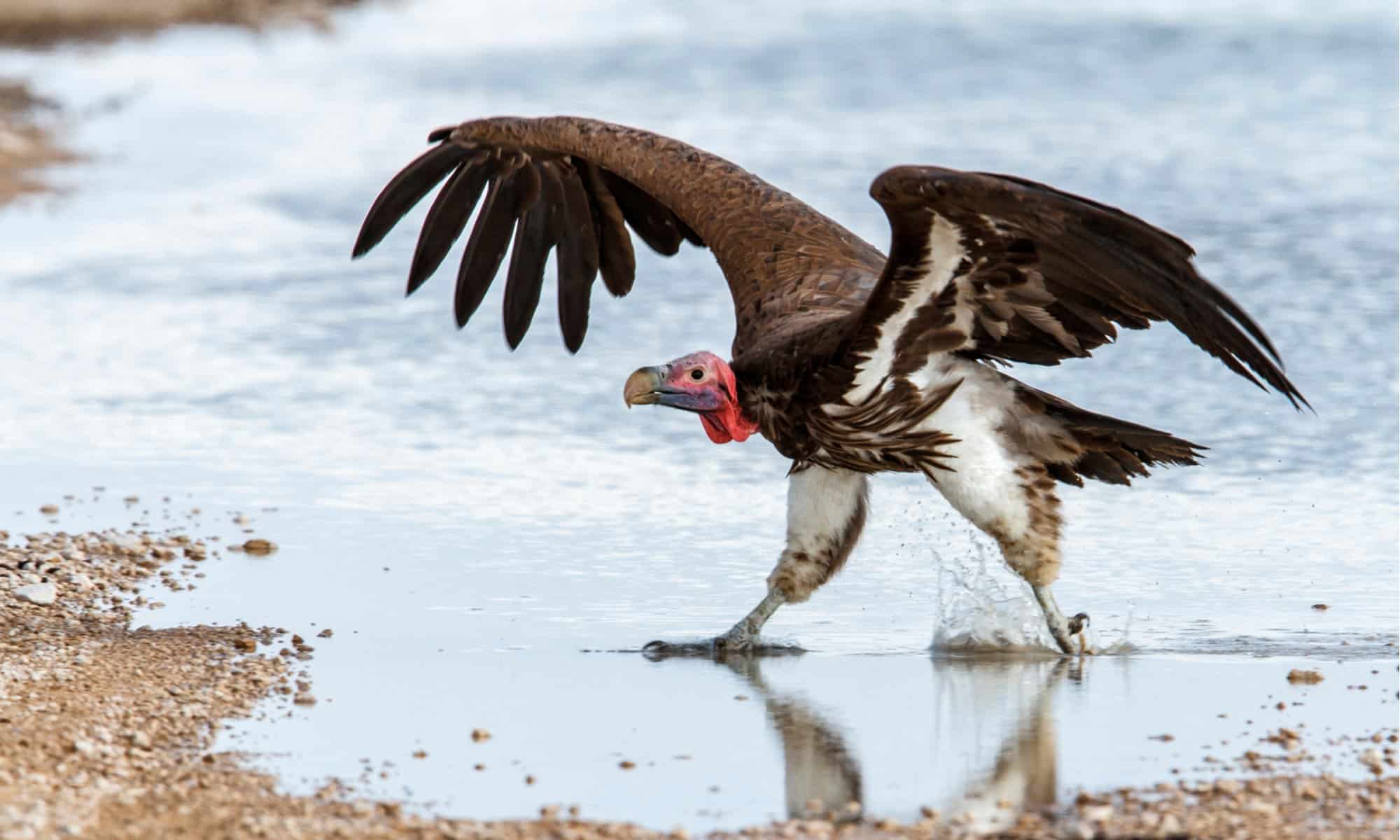
Many carnivorous animals feed on carrion – the remains of dead animals. It is nature’s way of recycling nutrients and provides a convenient source of food without the need for having to catch anything yourself! Vultures are perhaps the most well-known carrion feeders and in this clip, we see a large group of them feeding on a carcass lying in an African river.
There was some squabbling between the vultures and some hyenas who also wanted their share. Click below to watch the full video of a lappet-faced vulture getting snatched from near the carcass by a crocodile!
Where Do Lappet-faced Vultures Normally Live?
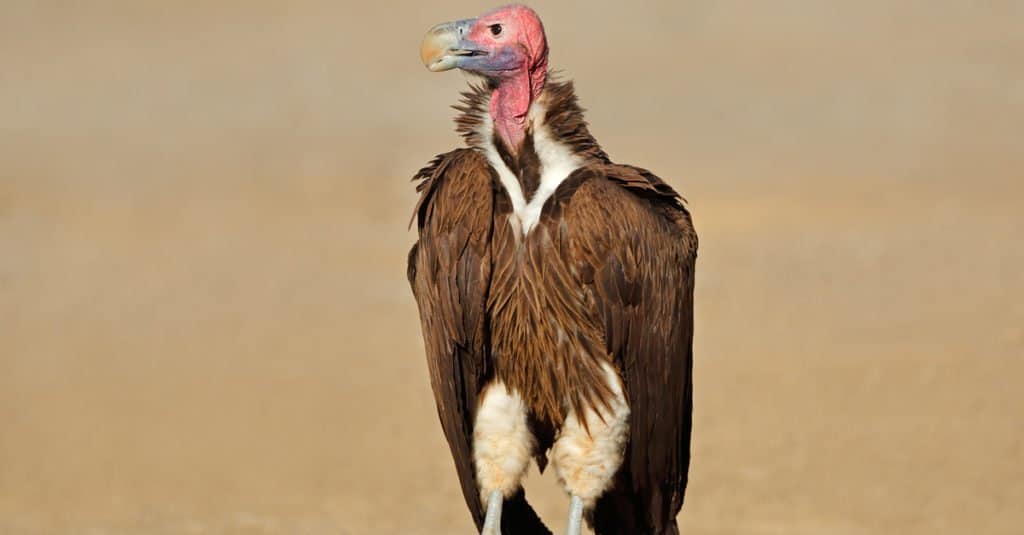
The lappet-faced vulture can have a wingspan of over nine feet
©EcoPrint/Shutterstock.com
The lappet-faced vulture is a native bird of large parts of Africa. Even though the spread of the populations is patchy, you can spot them in Angola, Botswana, the Democratic Republic of Congo, and South Africa to name just a few African countries. There are also populations living in Arabia, Yemen, Oman, and the United Arab Emirates.
This is a large bird! Whilst their body may only be 45 inches long, their wingspan can be a staggering nine and a half feet. They can weigh over 20 pounds. They have a preference for arid habitats so you will find them in deserts, steppes, grasslands, savannas, and open woodland. Ideally, there will be some acacia trees that they can use for perching however they are not found in forested areas.
Are Vultures Dirty Animals?
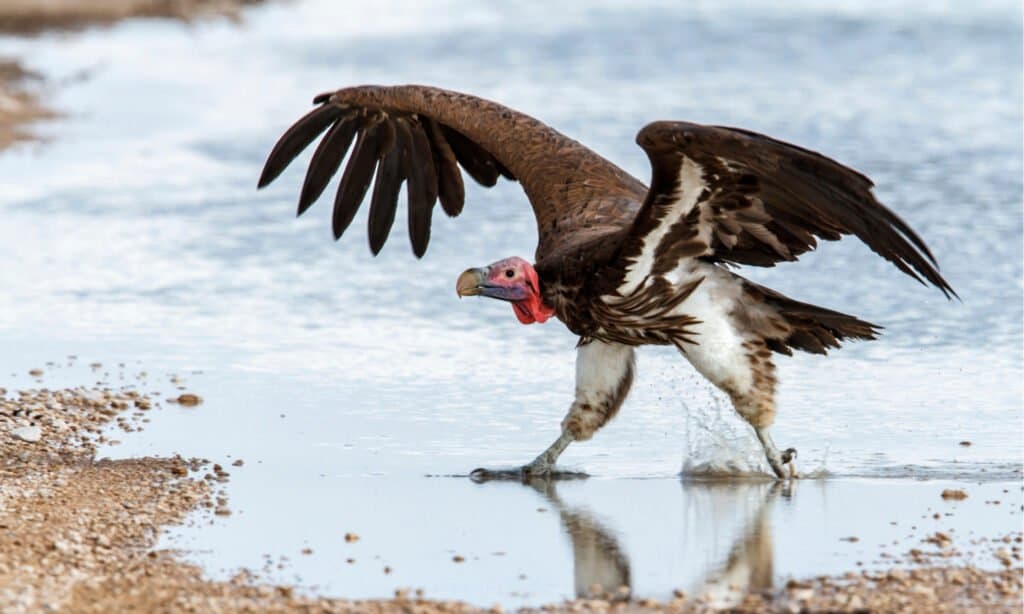
Vultures care a lot about their hygiene and they enjoy bathing. They also spend a lot of time in watering holes and like to sunbathe.
©Henk Bogaard/Shutterstock.com
Vultures have a pretty poor reputation which is a shame because they do a vital job. They remove dead and decaying animals from the environment which helps to prevent the spread of disease. Furthermore, they do this very efficiently. A group of 100 of them can strip a 100-pound carcass in just minutes.
As a matter of fact, vultures care a lot about their hygiene and are not dirty birds. They enjoy bathing and that is exactly what this individual was doing when it was snatched. These vultures spend a lot of time in watering holes but they also like to sunbathe.
The sunlight and heat stimulate the parasites that live in the feathers and make them move around. This makes them easier to pick off as the bird preens itself. Sadly, this particular bird did not spot the danger lurking in the murky river.
How Large Do Vultures Get?
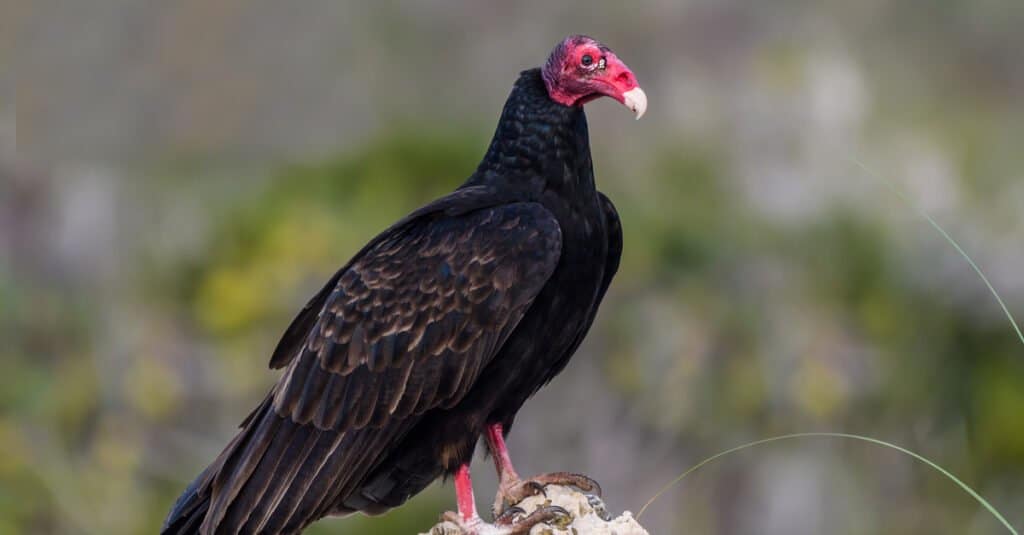
Red-headed vultures are of medium-size, about 30 to 34 inches long. It weighs around 7.7 to 13.9 pounds and its wings can stretch about 6.5 to 8.5 feet wide.
©FotoRequest/Shutterstock.com
White-backed Vultures (Gyps Africanus) have body lengths ranging from 78 to 98 cm (approximately 2 feet 7 inches to 3 feet 2.5 inches) and wingspans spanning 1.96 to 2.25 meters (approximately 6 feet 5 inches to 7 feet).
Andean Condors are truly massive; they hold the distinction of being the heaviest flying birds globally, weighing in at up to 33 pounds and boasting an impressive wingspan of up to 10 feet.
Due to their substantial size, Andean Condors prefer habitats with strong winds, allowing them to effortlessly glide on air currents instead of needing to flap their wings vigorously to take to the skies.
Is it Normal Behavior for a Crocodile to Eat a Vulture?
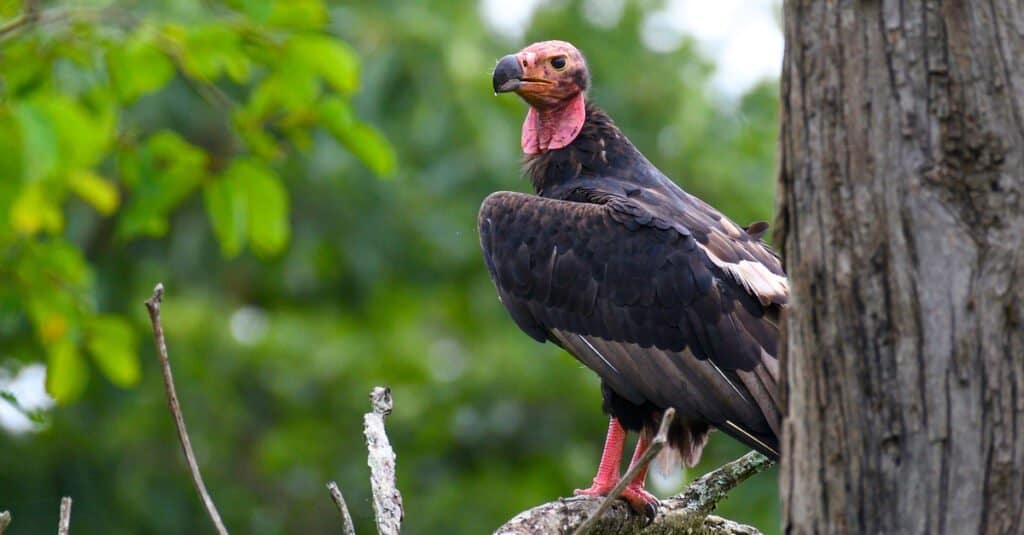
Crocodiles are opportunistic feeders, they will eat whatever they can when they can.
©faisal magnet/Shutterstock.com
Crocodiles, being carnivores, have a diverse diet that includes small mammals, birds, fish, bugs, frogs, other reptile species, and crustaceans. Although vultures are birds of prey, crocodiles are opportunistic feeders. This means that if they can catch an animal to eat, they will do so under any circumstances. This includes vultures.
In their natural habitat, small crocodiles eat fish, small frogs, lizards, crustaceans, and small mammals. In captivity, it’s essential to avoid feeding them chicken or beef exclusively.
Instead, their food should be chopped into manageable sizes for easy consumption. Live food, like fish and insects, can be placed in the water to stimulate the crocodile’s hunting instincts.
Thank you for reading! Have some feedback for us? Contact the AZ Animals editorial team.






